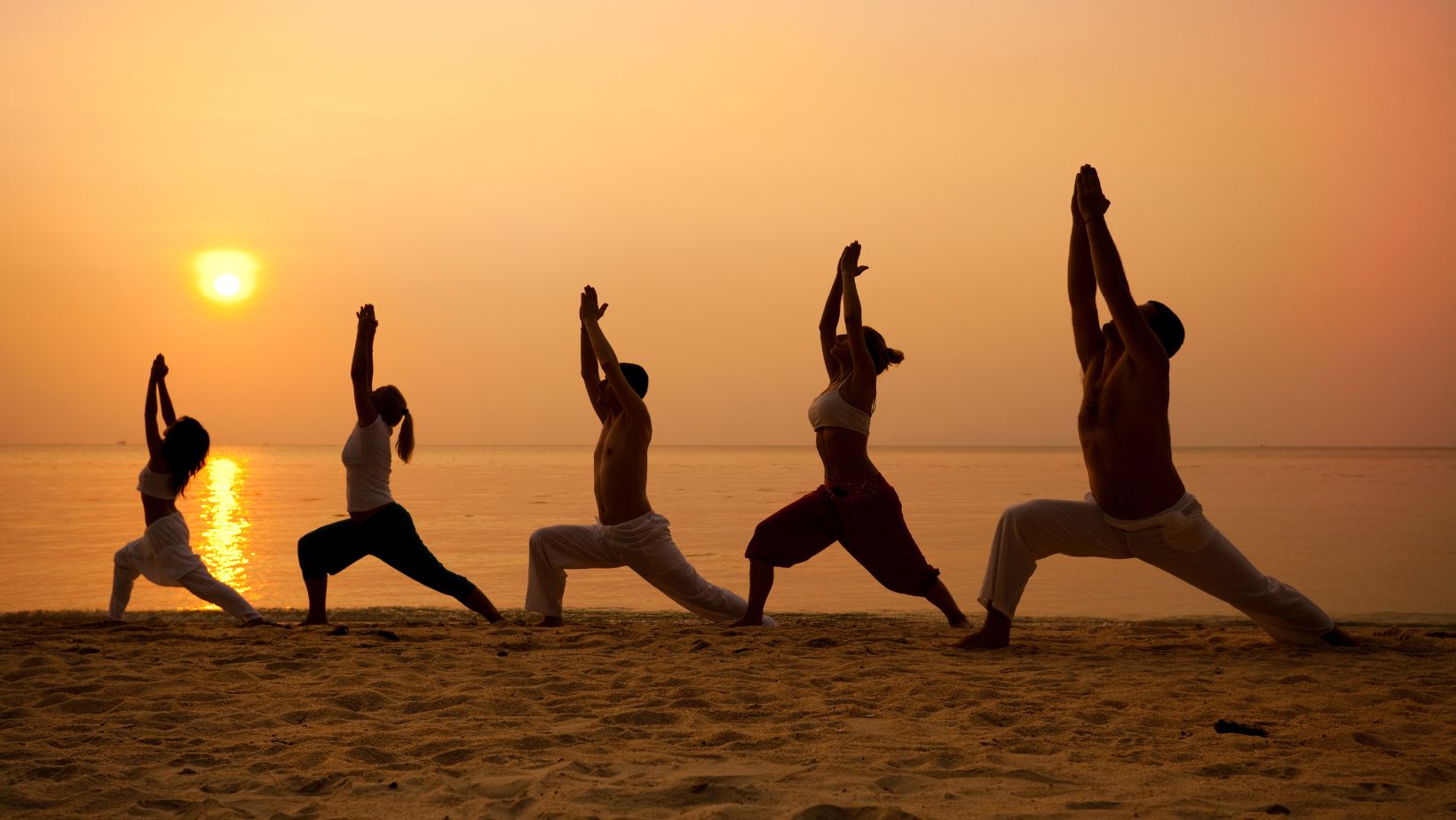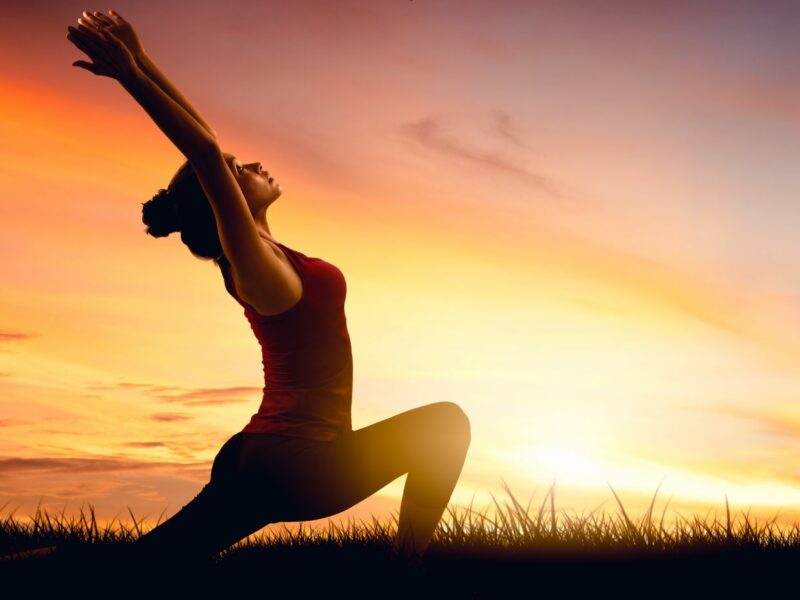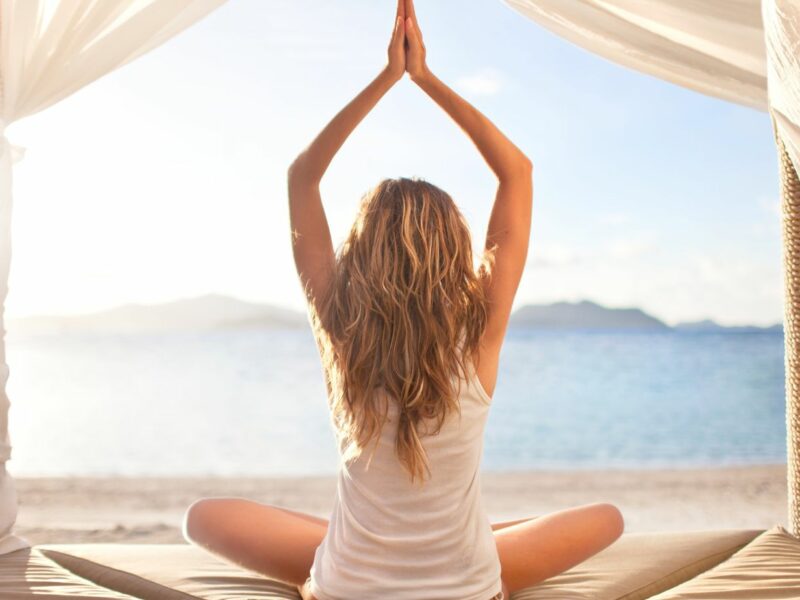Vinyasa yoga is a form of yoga that emphasizes flow and movement. The word “vinyasa” means “to place in a special way,” and vinyasa yoga is often referred to as “flow” yoga because of the continuous flow of movement from one pose to the next. Vinyasa yoga was popularized in the West by Krishnamacharya, who is often considered the father of modern yoga. Krishnamacharya developed a system of Hatha yoga that included elements of flowing movement, and he is credited with creating the Sun Salutation, a series of 12 poses that are often used as a foundation for vinyasa yoga sequences.
When was Vinyasa Yoga Created
Vinyasa yoga is a style of yoga that was created in the mid-20th century. Vinyasa means “linking movement with breath.” This type of yoga is characterized by a flowing, dynamic sequence of poses that are linked together by the breath. Vinyasa yoga is a great workout, and it can also be very calming and relaxing.
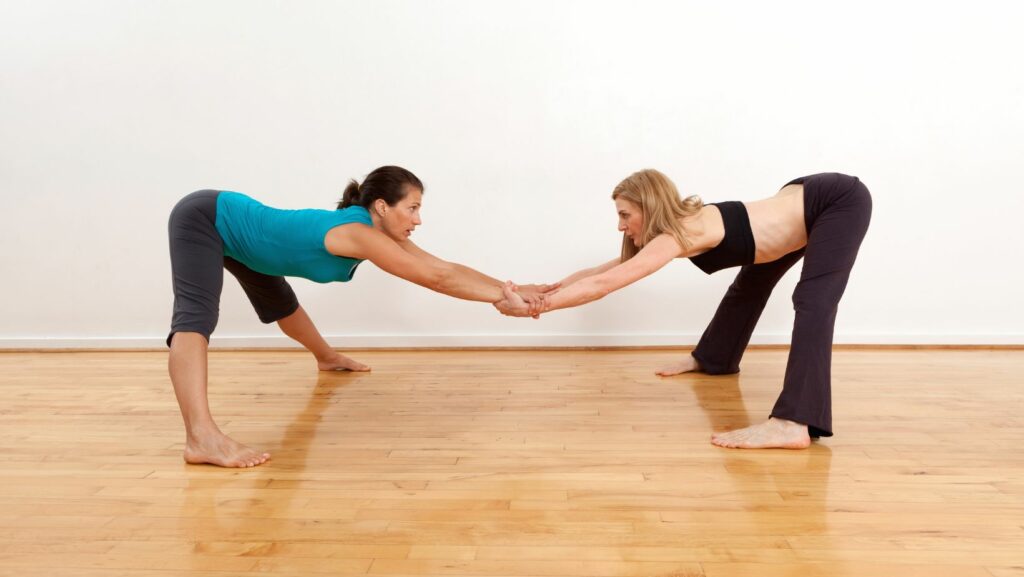
Pre-Classical Yoga
Pre-Classical yoga was a mostly oral tradition. The early texts were written in Sanskrit, the language of ancient India, and they are called the Vedas. The word veda means “knowledge” or “wisdom,” and these texts served as a guide for living a dharma-based life, which is a life in alignment with cosmic law and order. The Vedas are divided into four main sections: the Rigveda, Yajurveda, Samaveda, and Atharvaveda. Each Veda contains hymns, poems, prayers, and mantras composed by different rishis ( mystic seers) over many centuries.
The Vedas
The Vedas are a large body of Hindu scriptures. They are divided into four main sections: the Rigveda, Yajurveda, Samaveda and Atharvaveda. The Vedas were composed between approximately 1500 and 500 BCE, and they form the foundation of Hinduism.
The word “yoga” first appears in the Rigveda, and it is associated with a number of Vedic rituals, including the sacrifice. Yoga is also mentioned in the Upanishads, which are philosophical texts that date to around the same time as the Vedas.
The Upanishads
The Upanishads are a collection of ancient texts that form the basis of the Vedantic philosophy. The word “Upanishad” means “to sit close by,” and it is said that these texts were originally imparted by sages to their disciples who sat at their feet. The core teachings of the Upanishads center around the nature of reality, the relationship between Atman (soul) and Brahman (ultimate reality), and the path to liberation through yoga.
It is believed that the earliest Upanishads were composed around 800-700 BCE, though some scholars place them as early as the 10th or 11th century BCE. These texts were not widely known or studied outside of India until they were rediscovered by European scholars in the 18th and 19th centuries.
Classical Yoga
Vinyasa Yoga is a modern style of yoga that has its roots in the classical tradition of Hatha Yoga. The practice of Vinyasa Yoga is based on the principles of asanas (yoga postures) and pranayama (breath control).
The origins of Vinyasa Yoga can be traced back to the ancient text known as the Yoga Sutras of Patanjali. This text, which was written sometime between 200 BCE and 200 CE, contains 195 sutras (aphorisms) that form the basis of the eight-limb path of Classical Yoga.
The eight limbs of Classical Yoga are:
- Yama: Ethical restraints or commandments (such as ahimsa, or non-violence).
- Niyama: Positive duties or observances (such as Saucha, or cleanliness).
- Asana: Physical postures.
- Pranayama: Breath control.
- Pratyahara: Sense withdrawal or withdrawal of the senses.
- Dharana: Concentration.
- Dhyana: Meditative absorption.
- Samadhi: Union with the Divine.
The Yoga Sutras of Patanjali
The Yoga Sutras of Patanjali is a compilation of 196 Indian sutras (aphorisms) on the theory and practice of yoga. The Yoga Sutras were compiled around 400 CE by the sage Patanjali, taking materials about yoga from older tradition.
The Bhagavad Gita
The Bhagavad Gita, written sometime between the 5th and 2nd centuries BCE, contains some of the earliest references to Vinyasa Yoga. It wasn’t until the 20th century that the term “Vinyasa” was used to describe the style of Yoga that we now know as “Vinyasa Yoga.” The Bhagavad Gita describes a battle between two armies, in which Prince Arjuna must choose whether to fight or retreat. He turns to his charioteer, Krishna, for guidance. Krishna counsels Arjuna to do his duty and fight, even though it means killing his friends and family members who are on the opposing side. In order to illustrate his point, Krishna goes into great detail about the importance of following one’s Dharma, or path in life. He describes the process of Yoga as a way to connect with one’s true nature and live in alignment with Dharma.
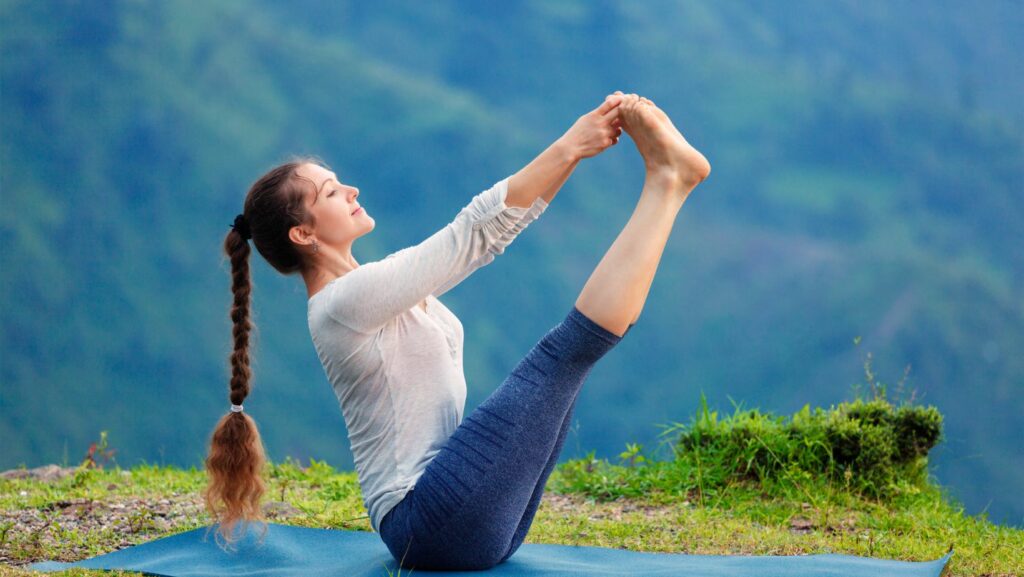
The word “vinyasa” appears several times in the Bhagavad Gita, but it isn’t until verse 32 of Chapter 6 that Krishna explicitly mentions Vinyasa Yoga as a way to connect with one’s true self:
“When your mind becomes fixed on Me, you will attain Me. I promise you this because I am your friend. But if your mind does not become fixed on Me, then you will wander in this material world like the restless wind.” – Bhagavad Gita 6:34-35
In these verses, Krishna is explaining that if we want to achieve union with God (represented by “Me”), we need to learn how to fix our minds on Him. One way to do this is through the practice of Vinyasa Yoga.
Post-Classical Yoga
The first clear reference to “vinyasa” in yoga literature is in the Nath Sampradaya’s Hatha Yoga Pradipika in the 15th century. In this text, Svatmarama identifies that which distinguishes haṭha yoga from other types of yoga:
Haṭha yoga is said to arise from a tantra called the Amaraugha Prabodhini, which is no longer extant. Some believe this tantra dates back as far as the 9th century, making haṭha yoga one of the oldest styles of yoga.
The Hatha Yoga Pradipika doesn’t describe vinyasa specifically, but it does lay out a system of asanas (yoga postures) connected by breath. This system became known as Surya Namaskara A and B, or Salutation to the Sun A and B. While we don’t know exactly when or where they were developed, they are thought to be among the oldest vinyasas.
Vinyasa quickly gained popularity as a sequence connecting asanas, or poses. It wasn’t long before teachers began creating their own flows, linking different postures together in creative ways. In time, vinyasa became synonymous with “flow” yoga, and today it’s one of the most popular styles practiced around the world.
The Hatha Yoga Pradipika
The Hatha Yoga Pradipika is a 15th-century Sanskrit manual on hatha yoga, attributed to Svatmarama, and also known as the Goraksha Samhita. The date of composition is unknown, but according to James Mallinson, may be as early as the 14th century.
Thehya Yoga Pradipika is considered one of the most important texts of hatha yoga, and its main goal is to present the “essential principles of hatha yoga.” It is divided into four chapters, each of which deals with a different topic.
Chapter 1 contains an introduction to yoga and its benefits. Chapter 2 discusses pranayama, or breath control. Chapter 3 covers asanas, or yoga postures. And finally, Chapter 4 discusses mudras and bandhas, which are special techniques for retention of breath and energy”
The Gheranda Samhita
The Gheranda Samhita, thought to date back to the late 1600s, is another key text in tracing the origins of vinyasa yoga. This text is also attributed to Gorakshanatha, and like the Hatharata Samhita, it offers brief descriptions of various asanas. The Gheranda Samhita is significant in that it is the first yoga text to introduce the idea of vinyasa, or linking breath to movement.
Modern Yoga
Most of the yoga that is practiced in the West today can be traced back to a single man, Tirumalai Krishnamacharya. Born in 1888, Krishnamacharya is often referred to as “the father of modern yoga” because of the significant impact he had on the development of yoga as it is practiced today. He was instrumental in codifying and popularizing many of the asanas (yoga poses) and principles that are now considered standard in yoga practice.
Krishnamacharya was born into a family of scholars and priests in southern India. From a young age, he showed an aptitude for learning, and by his early twenties he had mastered a number of ancient Indian texts, including the Vedas (the oldest Hindu scriptures). In 1910, he began his studies with Yogeshwara Siddhartha (also known as Sri T Krishnamachar), who is considered to be one of the foremost authorities on yoga at that time. Under Yogeshwara’s tutelage, Krishnamacharya developed a deep understanding of yoga philosophy and practice.
In 1924, Krishnamacharya journeyed to Mysore to teach at the palace of Maharaja Nalvadi Krishna Raja Wadiyar IV. It was during his time in Mysore that Krishnamacharya began to develop the system of yoga now known as Ashtanga Yoga (“eight-limbed yoga”). This system is based on the Yoga Sutras of Patanjali, an ancient Indian text written around 400 BCE. The eight limbs of Ashtanga Yoga are yama (moral codes), niyama (self-observances), asana (yoga postures), pranayama (breath control), pratyahara (sense withdrawal), dharana (concentration), dhyana (meditation), and samadhi (absorption).
Krishnamacharya also began teaching what is now known as Vinyasa Yoga during his time in Mysore. Vinyasa Yoga is a style of yoga that links breath and movement, and it is characterized by its fluidity and dynamic transitions between poses. In many ways, Vinyasa Yoga can be seen as a synthesis of two other styles of yoga: Ashtanga Yoga, with its emphasis on correct alignment and breath control; and Iyengar Yoga, with its focus on precise positioning and props such as blankets, blocks, and belts to ensure correct alignment.
It was not until after Krishnamacharya’s death in 1989 that Vinyasa Yoga began to gain popularity outside India. In the 1990s, two of Krishnamacharya’s students — Pattabhi Jois and BKS Iyengar — began teaching Ashtanga Yoga and Iyengar Yoga respectively in the West. The popularity of these two styles paved the way for other types of “flow” or “power” yoga to become popular in gyms and studios across America.
Krishnamacharya and the Ashtanga Vinyasa Yoga
Krishnamacharya is often credited as being the creator of what we now know as Vinyasa Yoga. In the 1920s and 1930s, Krishnamacharya developed a style of yoga that he called Ashtanga Vinyasa Yoga. Ashtanga means “eight-limbed” in reference to the yoga sutras of Patanjali, and vinyasa means “linking movement with breath.”
Pattabhi Jois and the Ashtanga Yoga
In the 1930s, Krishnamacharya was teaching yoga in Mysore, India at the Sanskrit College and the Maharaja’s palace. One of his students was Pattabhi Jois, who would go on to develop the system of Ashtanga Vinyasa Yoga.
Pattabhi Jois (pronounced “joyce”) was born in Karnataka, India in 1915. He began studying yoga with Krishnamacharya at the age of 18 and continued to study with him for many years. In 1948, Pattabhi Jois founded the Ashtanga Yoga Research Institute in Mysore, where he taught yoga until his death in 2009.
Ashtanga Vinyasa Yoga is a system of yoga that includes six sequence of postures, which are meant to be practiced daily. The sequences get progressively more difficult as you move through them. The first sequence, known as thePrimary Series, is considered to be the most important and is the foundation for all of the other sequences.
The practice of Ashtanga Vinyasa Yoga is meant to purify the body and mind and lead to self-realization. Pattabhi Jois believed that everyone has a “personal practice” that is unique to them, based on their individual needs and abilities. He emphasized that yoga should be practiced with ease and not force, in order to avoid injury.
Pattabhi Jois taught his sequences all over the world and his students included some of today’s most well-known yoga teachers, such as David Williams, Richard Freeman, and Nancy Gilgoff.
B.K.S. Iyengar and the Iyengar Yoga
Iyengar yoga was developed by B.K.S. Iyengar, who was born in 1918 in India. Iyengar’s teaching emphasizes precise alignment of the body in each pose and the use of props to ensure correct placement of the body. Students are taught to move into and out of poses slowly and with control, and to hold each pose for a specific period of time.
Iyengar began practicing yoga at the age of 15, under the guidance of his brother-in-law, Tirumalai Krishnamacharya. Krishnamacharya is often credited as the “father of modern yoga,” as he is responsible for developing and popularizing many of the yoga styles practiced today, including ashtanga yoga and vinyasa yoga.
Iyengar continued to study with Krishnamacharya until the latter’s death in 1989. He also studied with Ramamohan Brahmachari and Krishnamacharya’s son, T.K.V. Desikachar. In 1952, Iyengar established his own school of yoga in Pune, India. He has written numerous books on yoga, including Light on Yoga, which is considered a modern classic on the subject.
Conclusion
In conclusion, the origins of vinyasa yoga are difficult to date precisely due to the lack of historical records. However, it is thought to have originated sometime between the 10th and 11th centuries CE, making it one of the oldest styles of yoga still practiced today. Vinyasa yoga has evolved greatly over the centuries, but its core principles remain the same: linking breath with movement to create a fluid, energetic practice.
